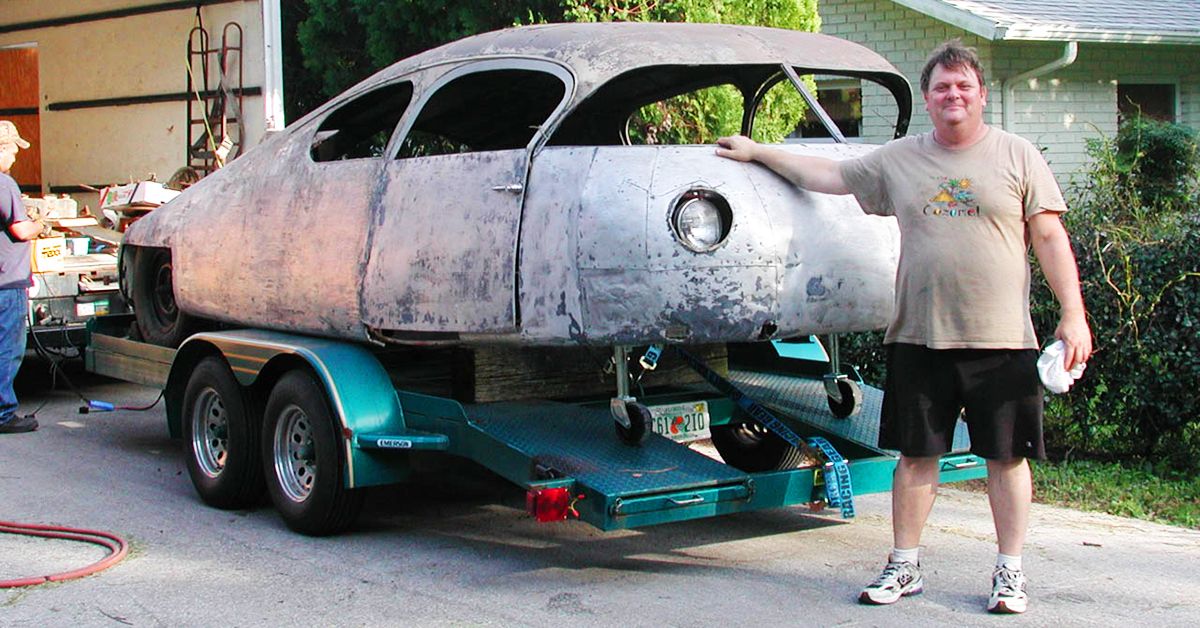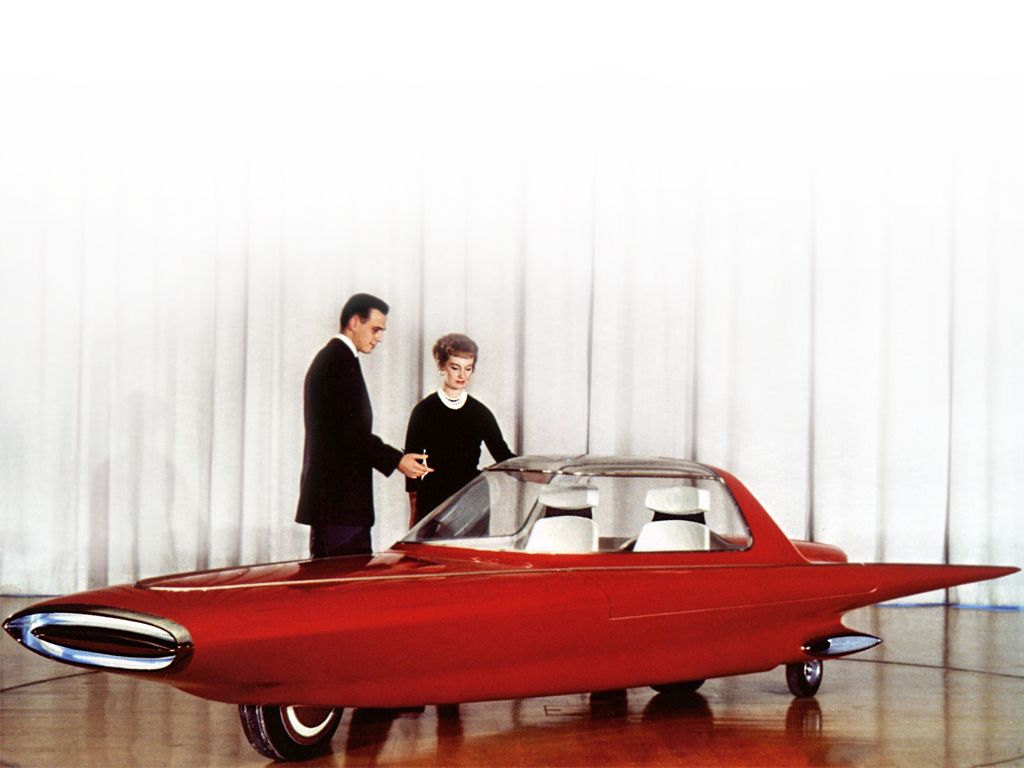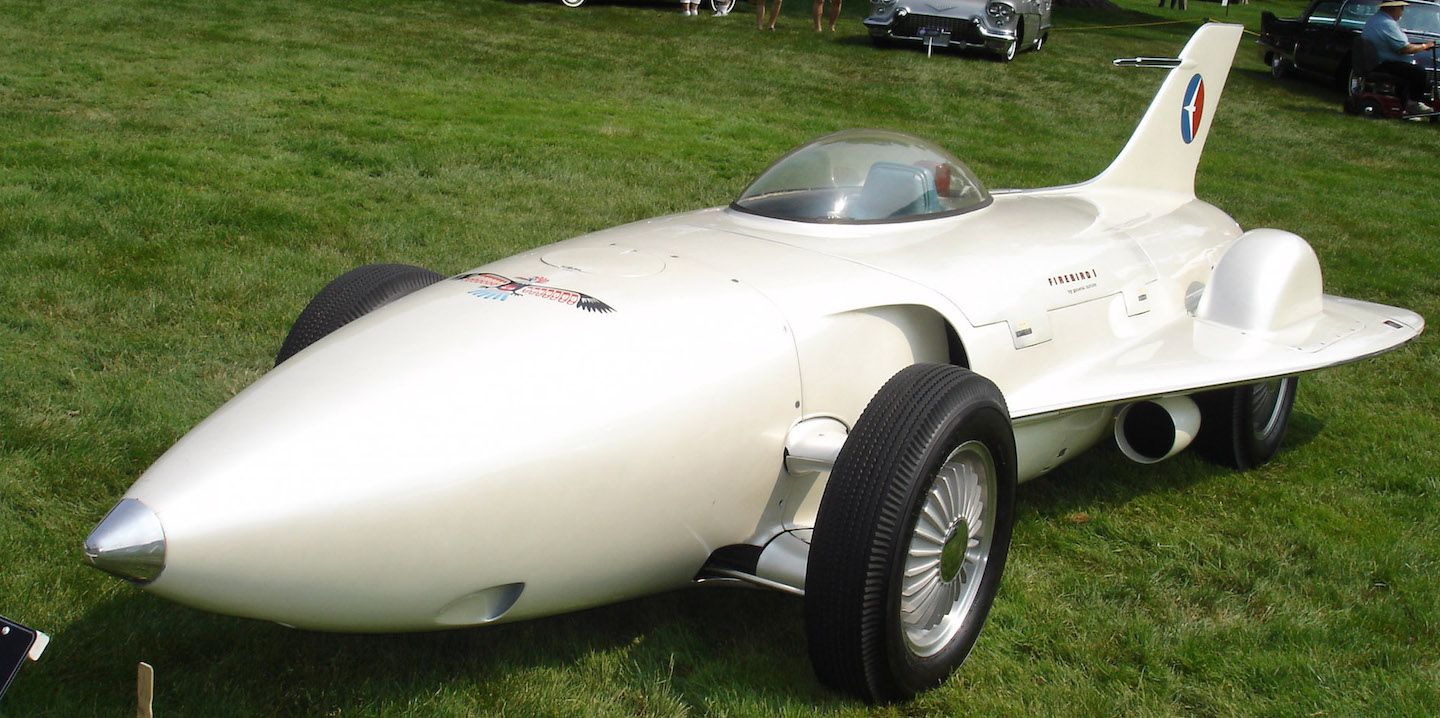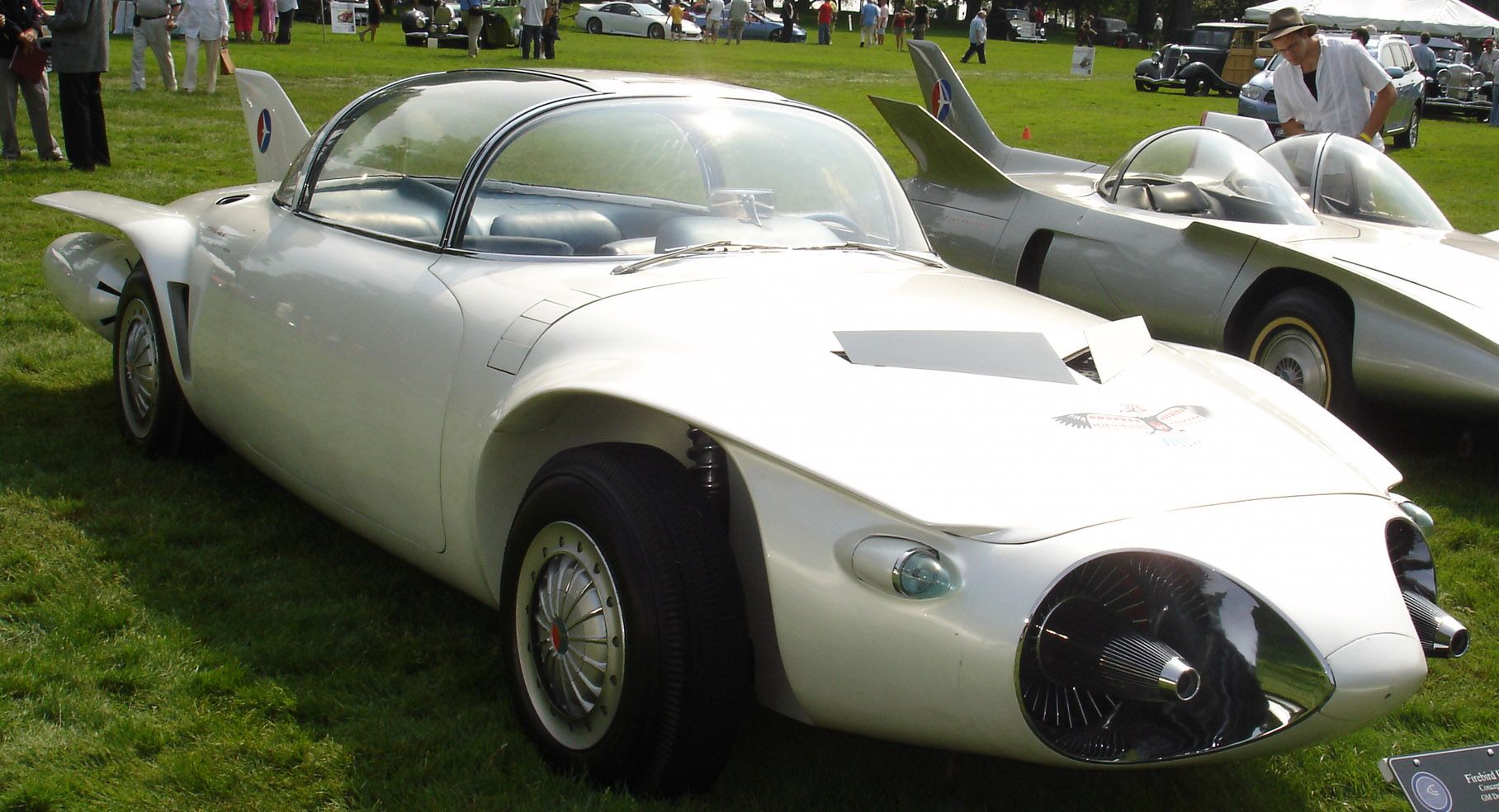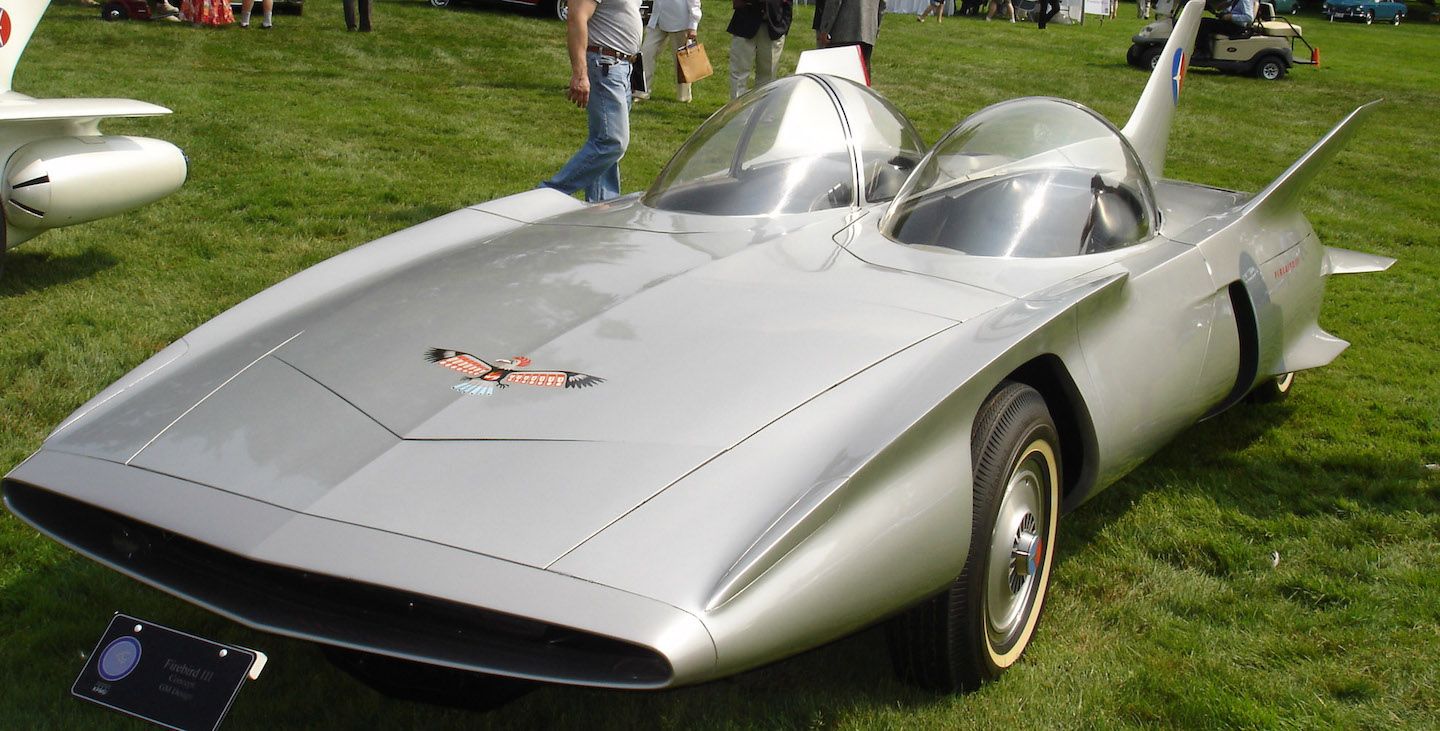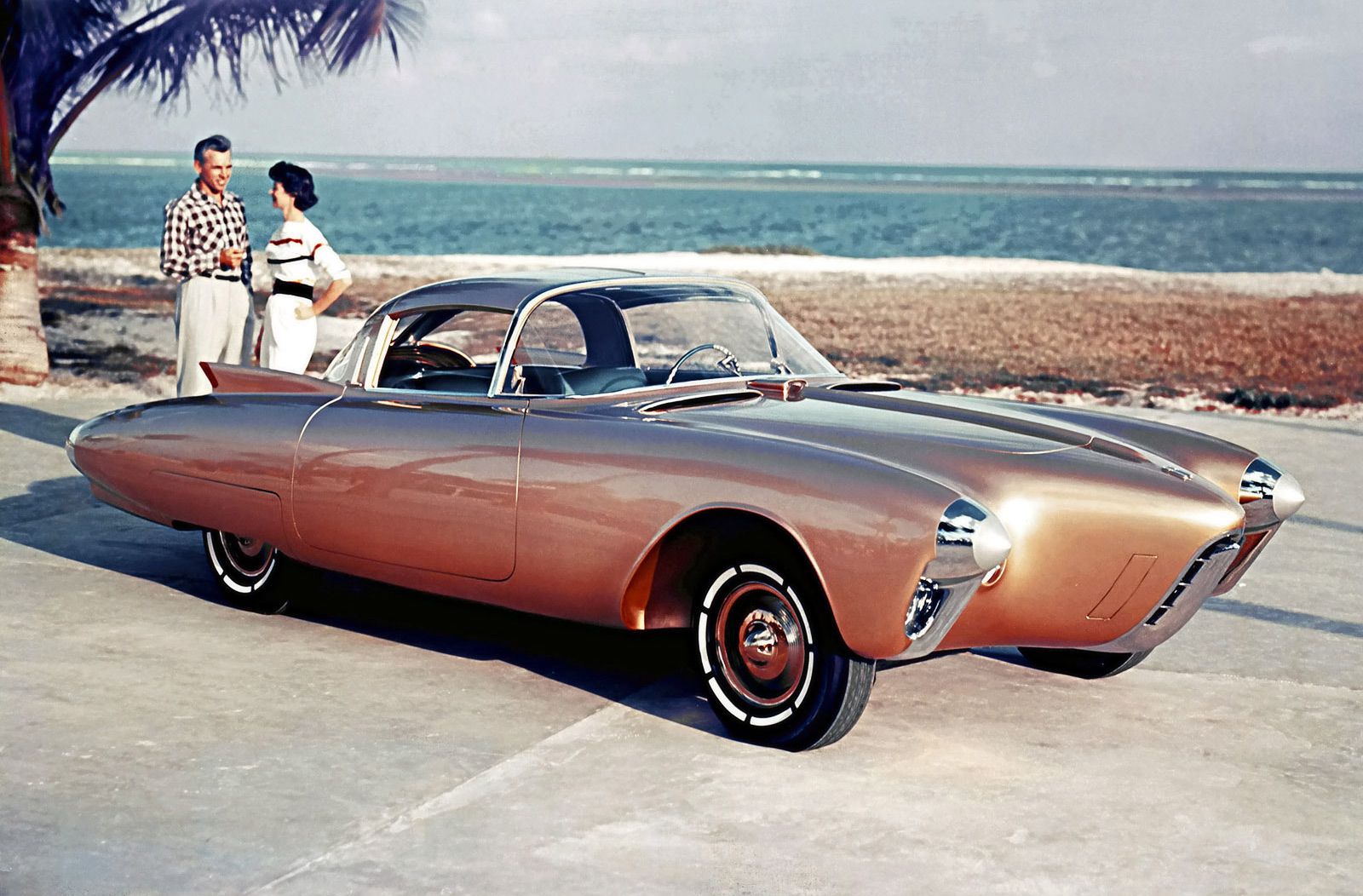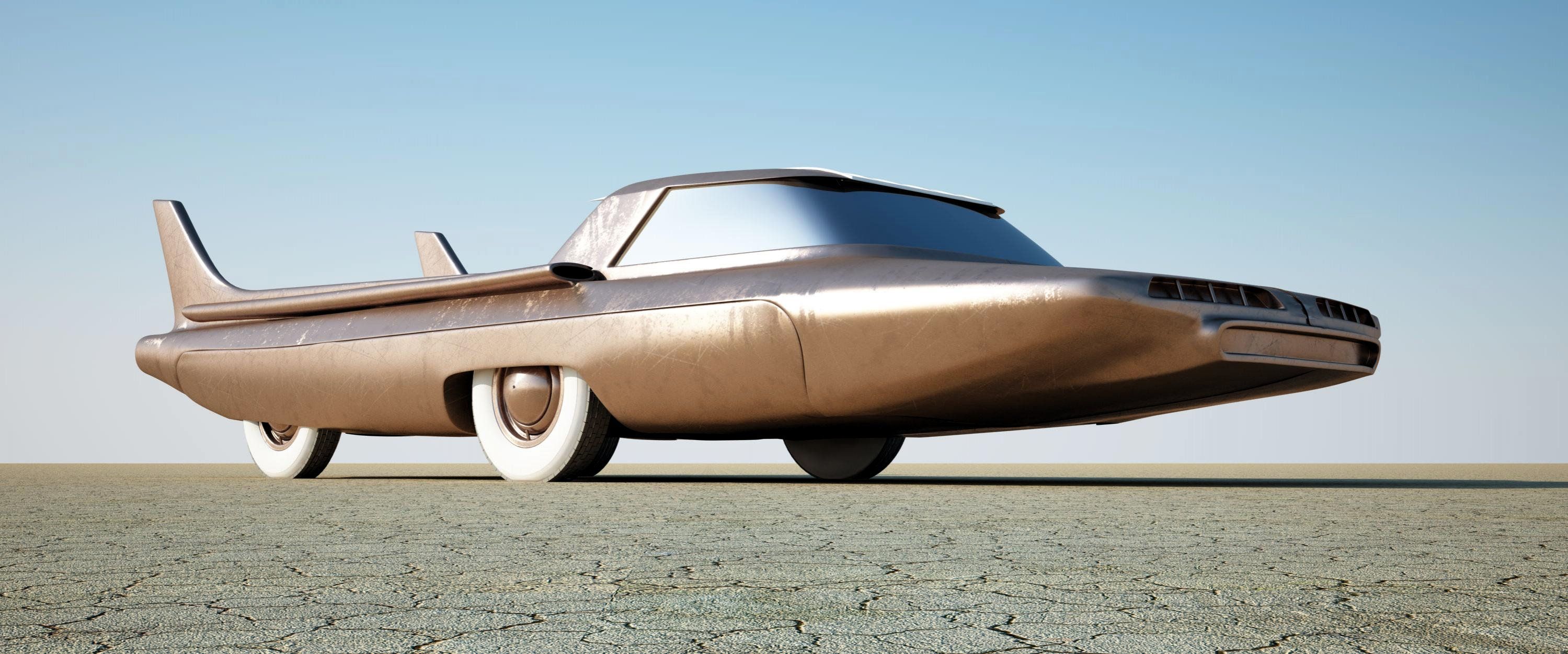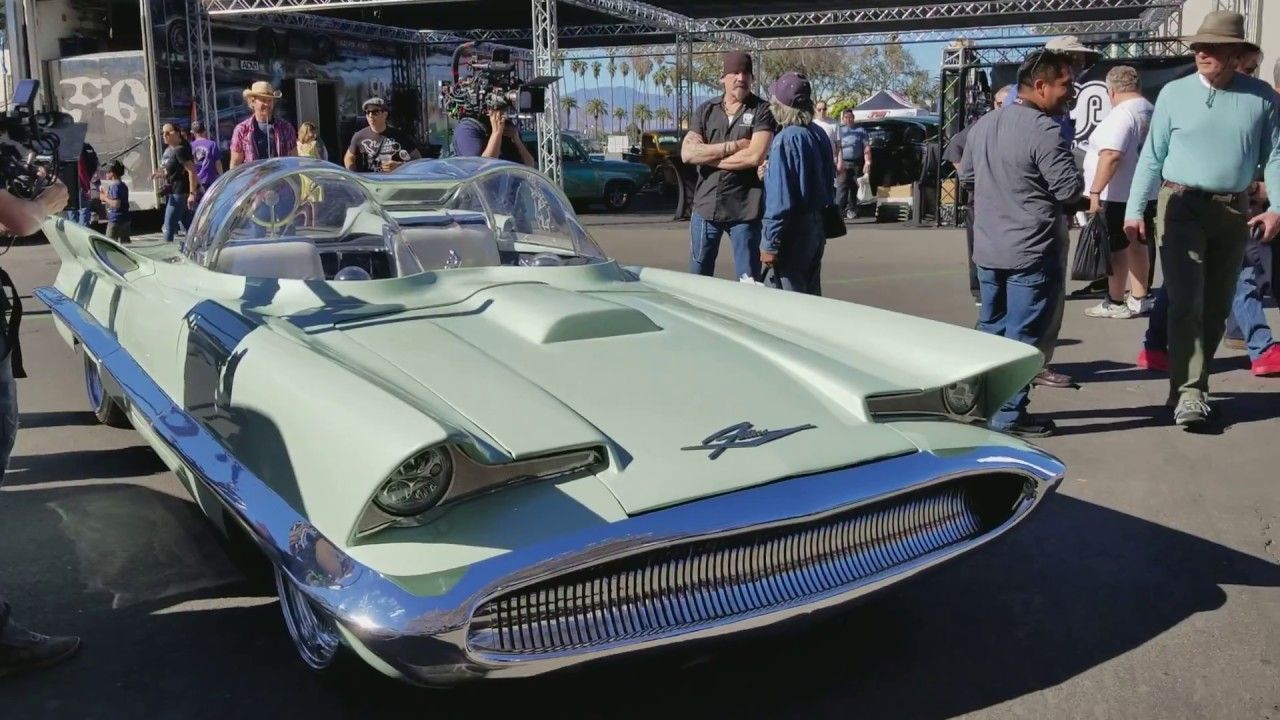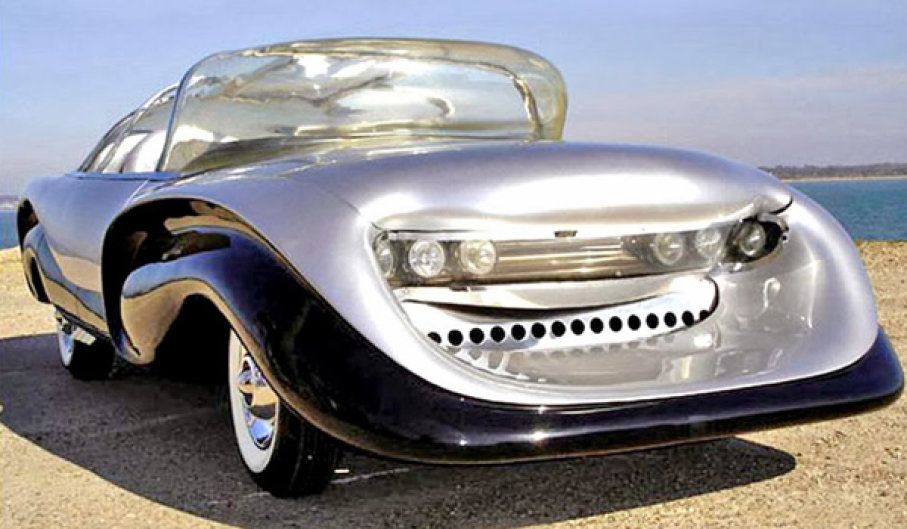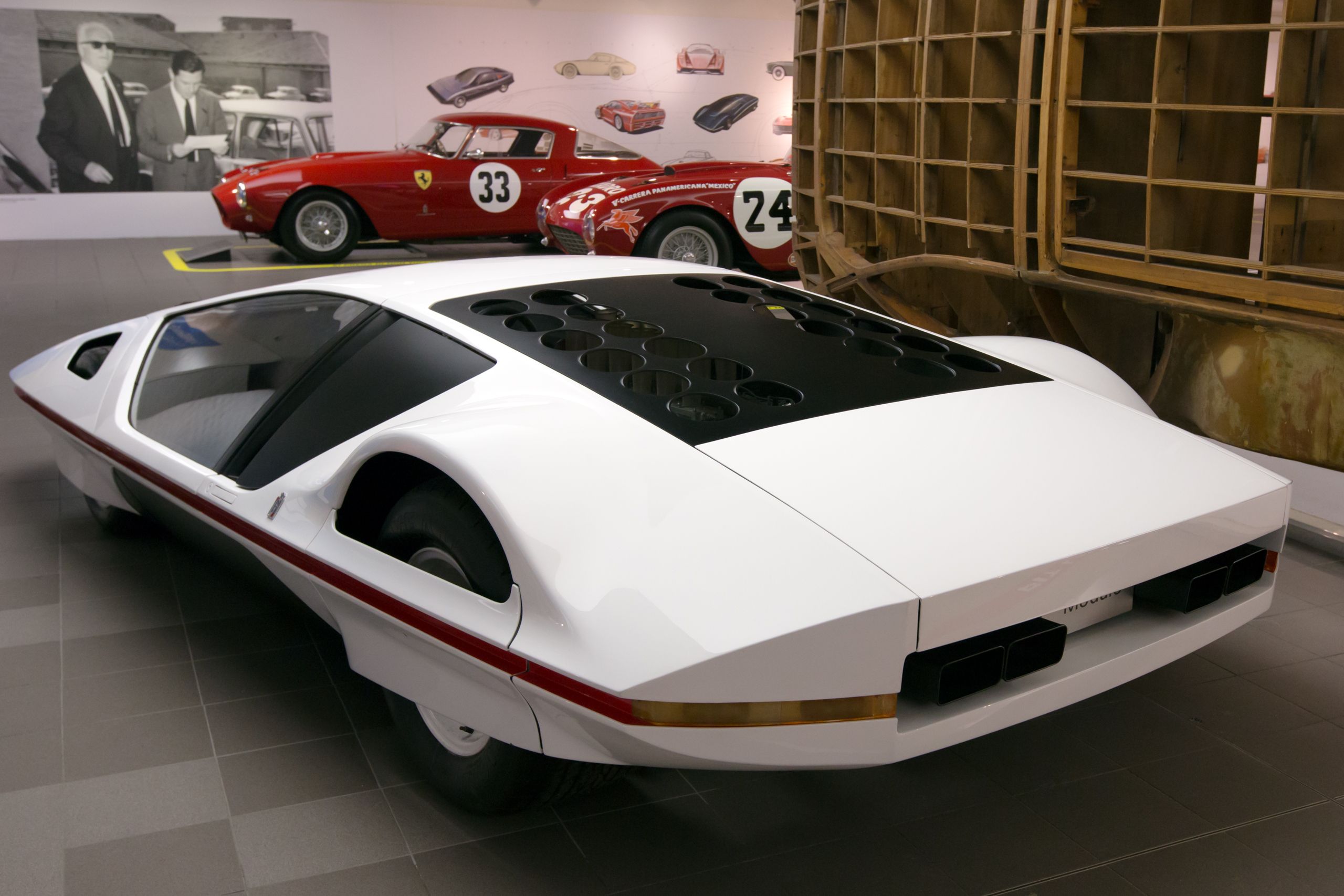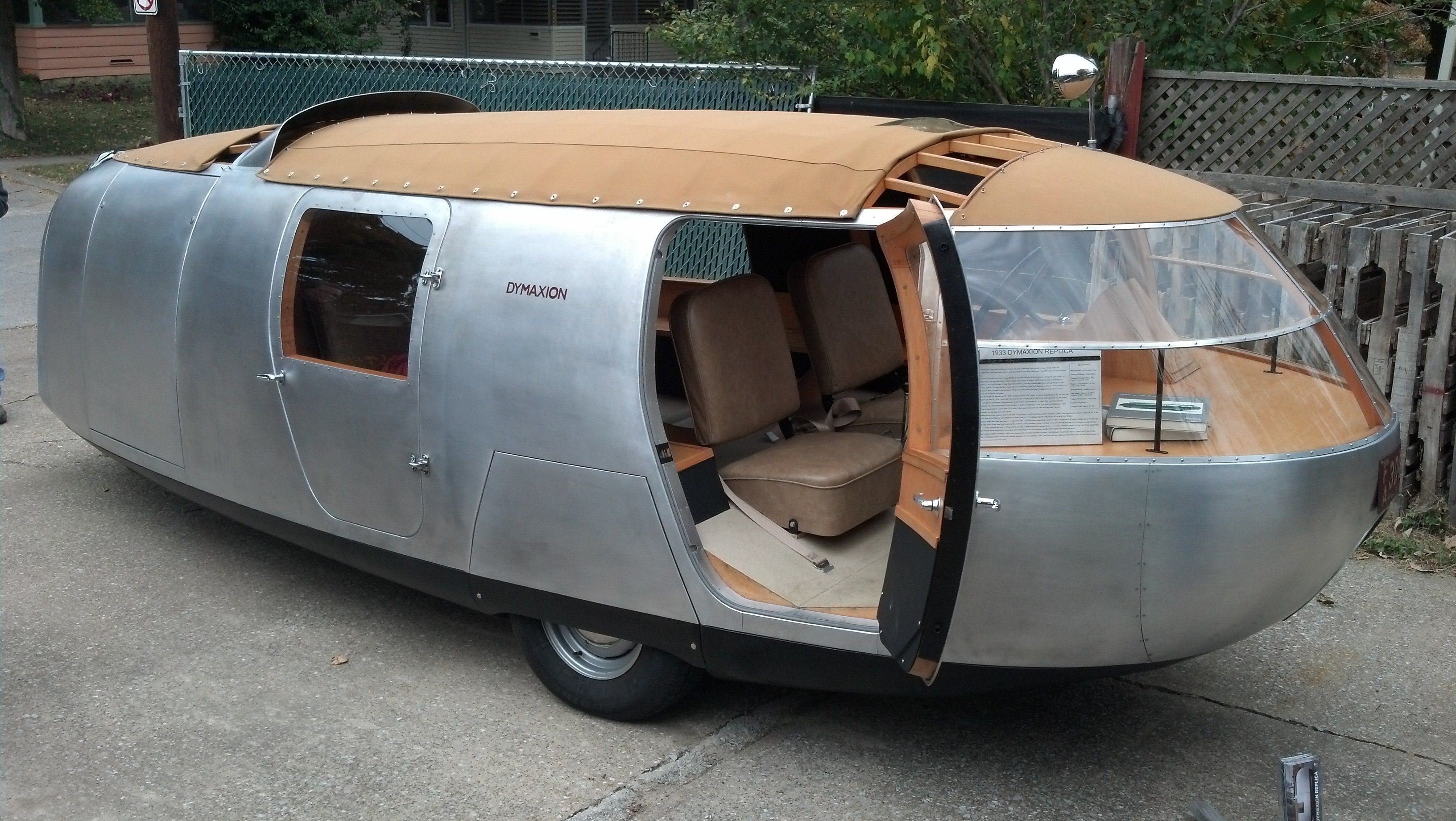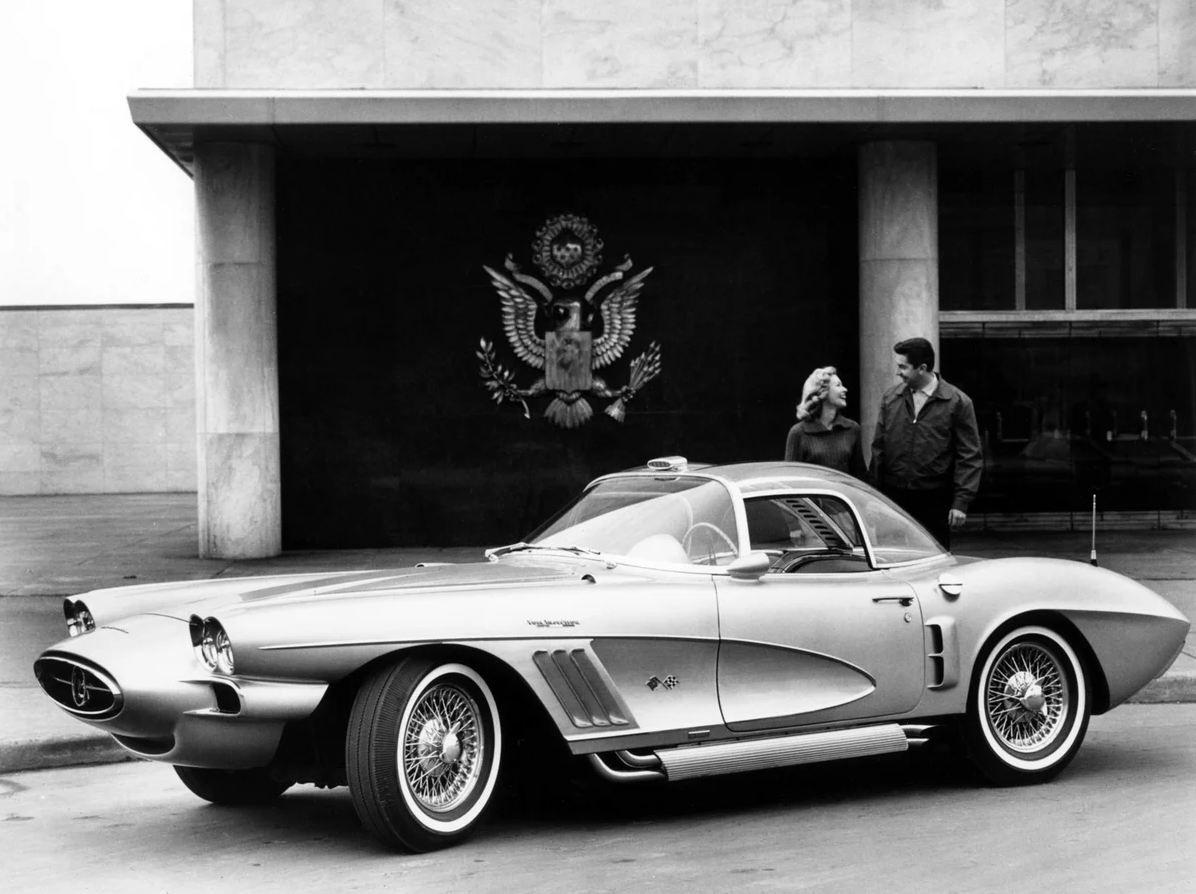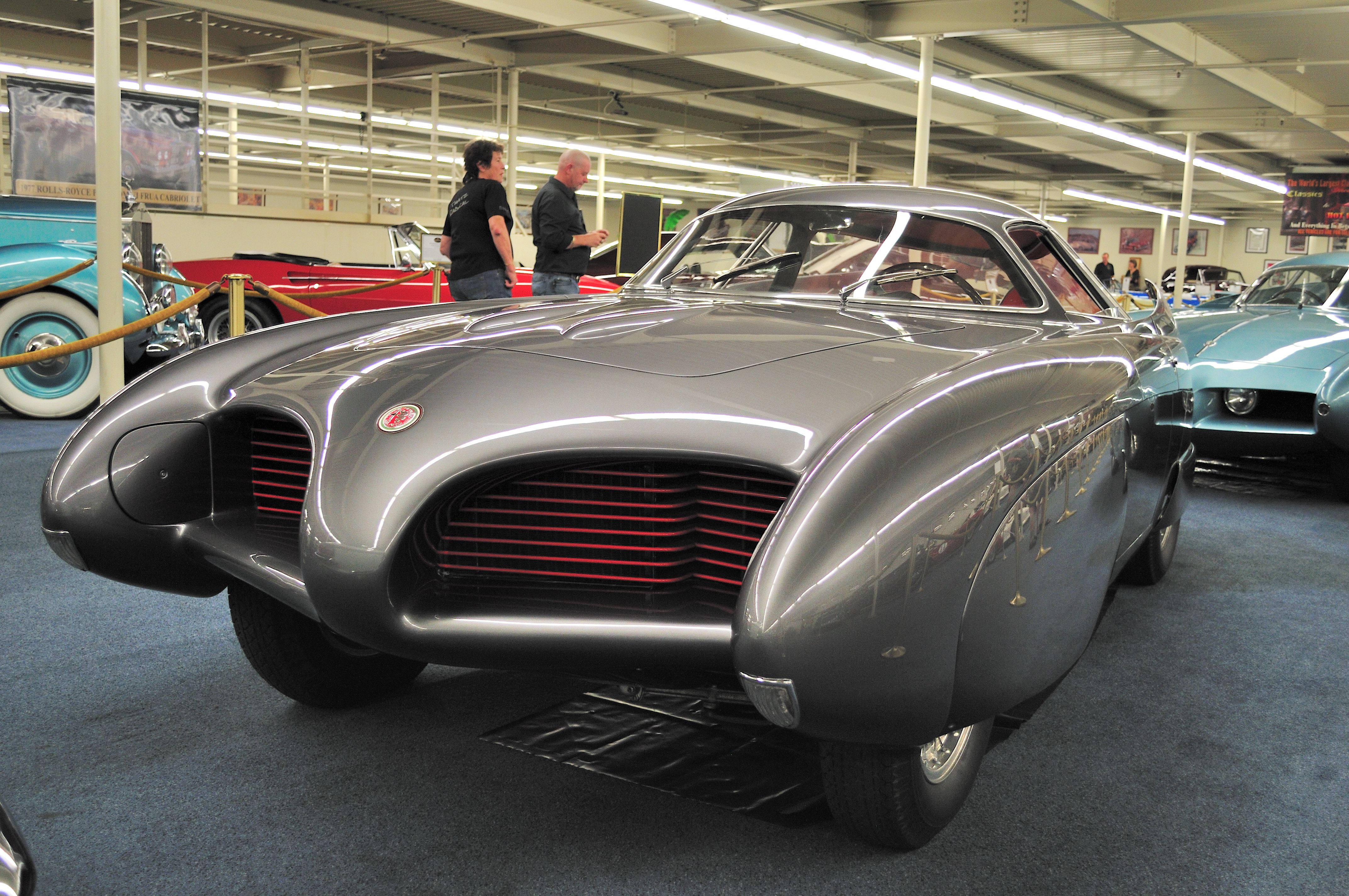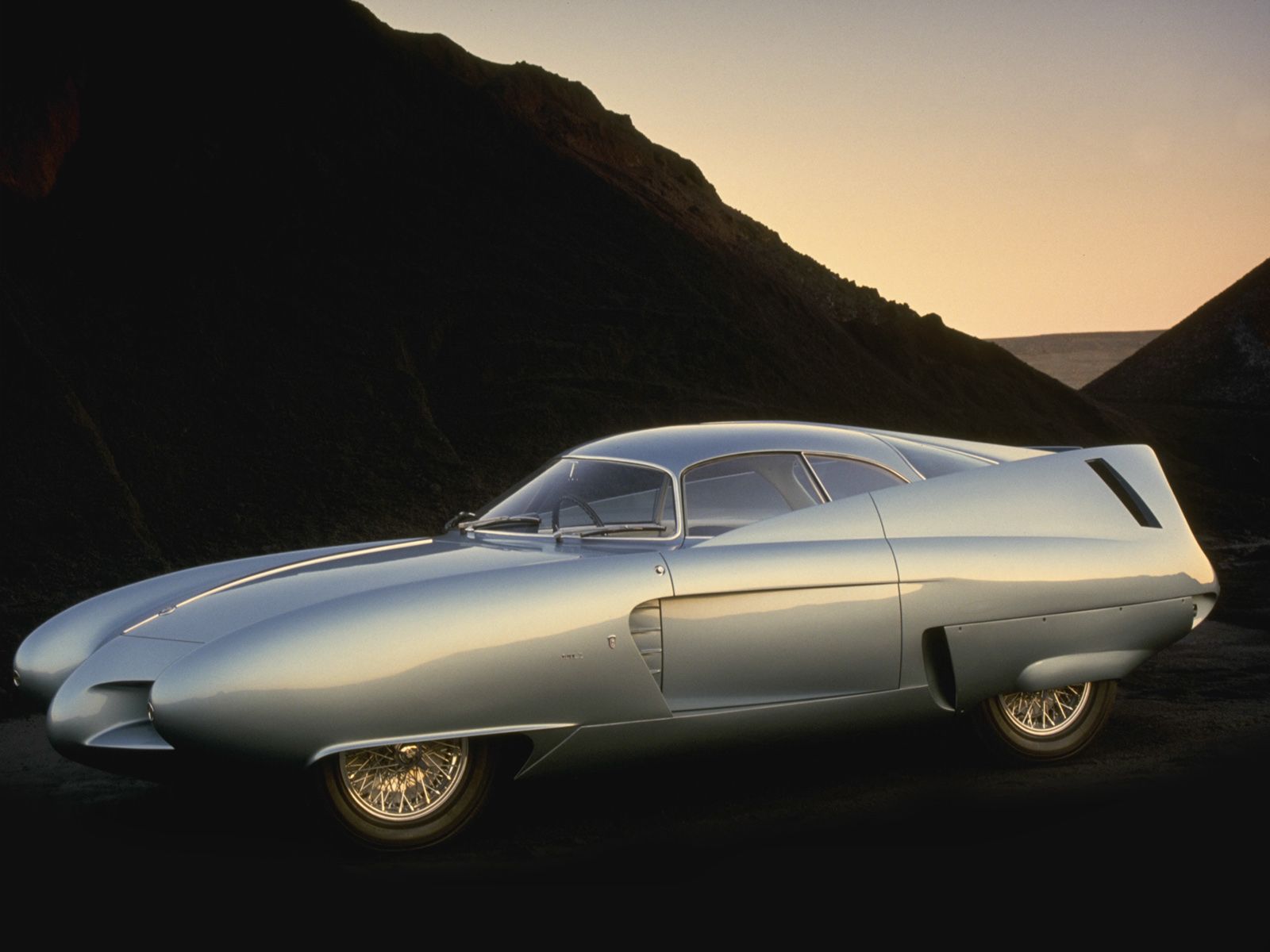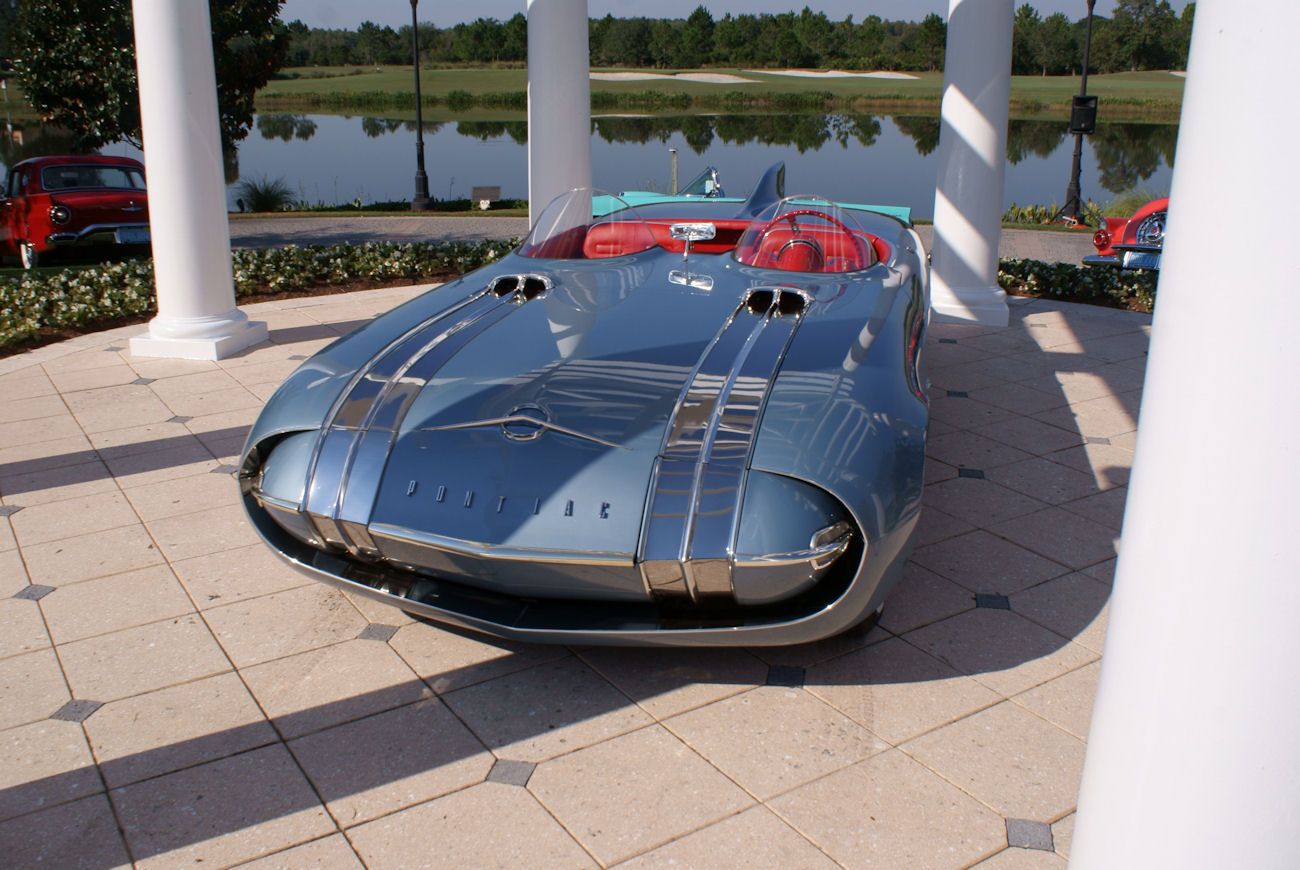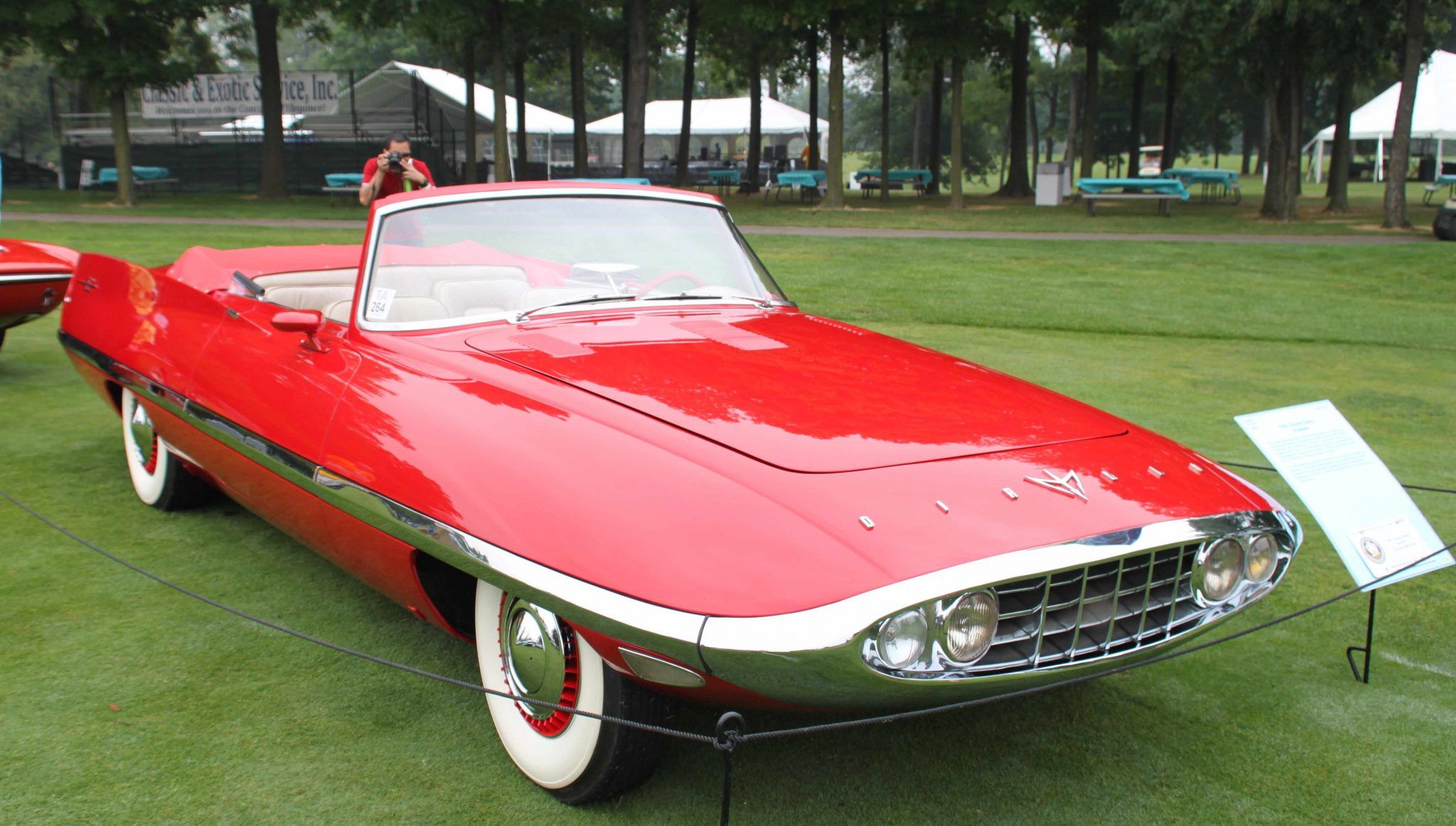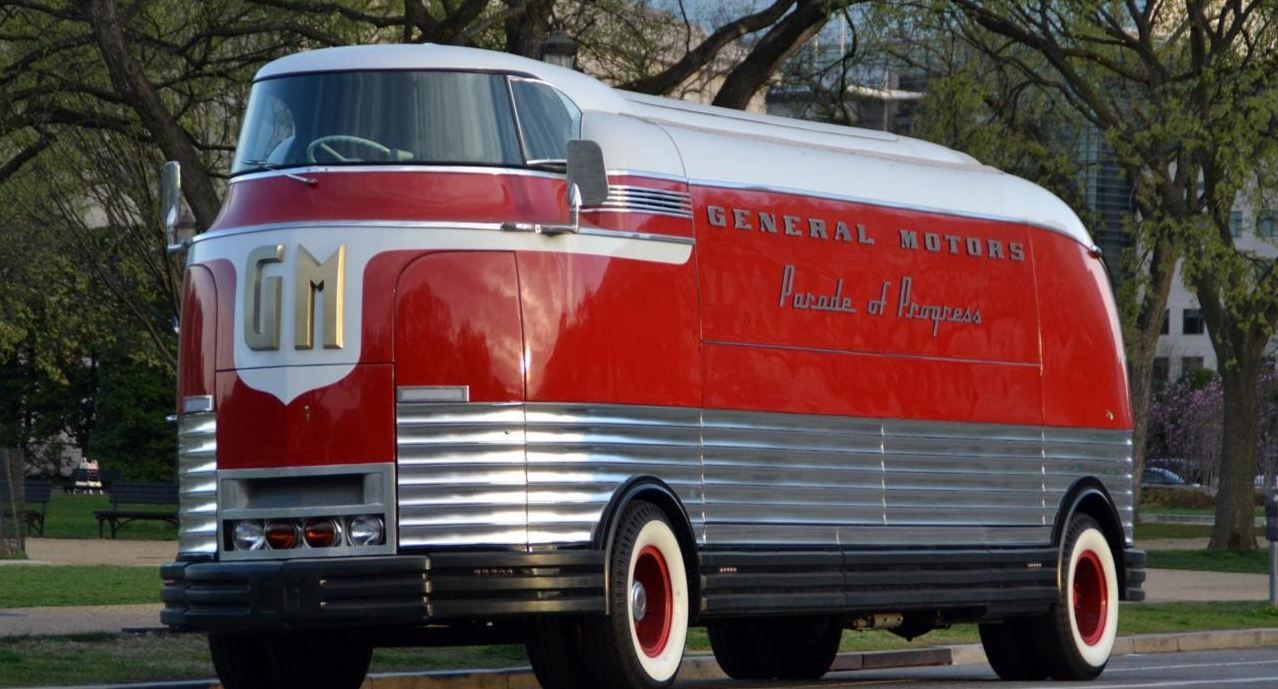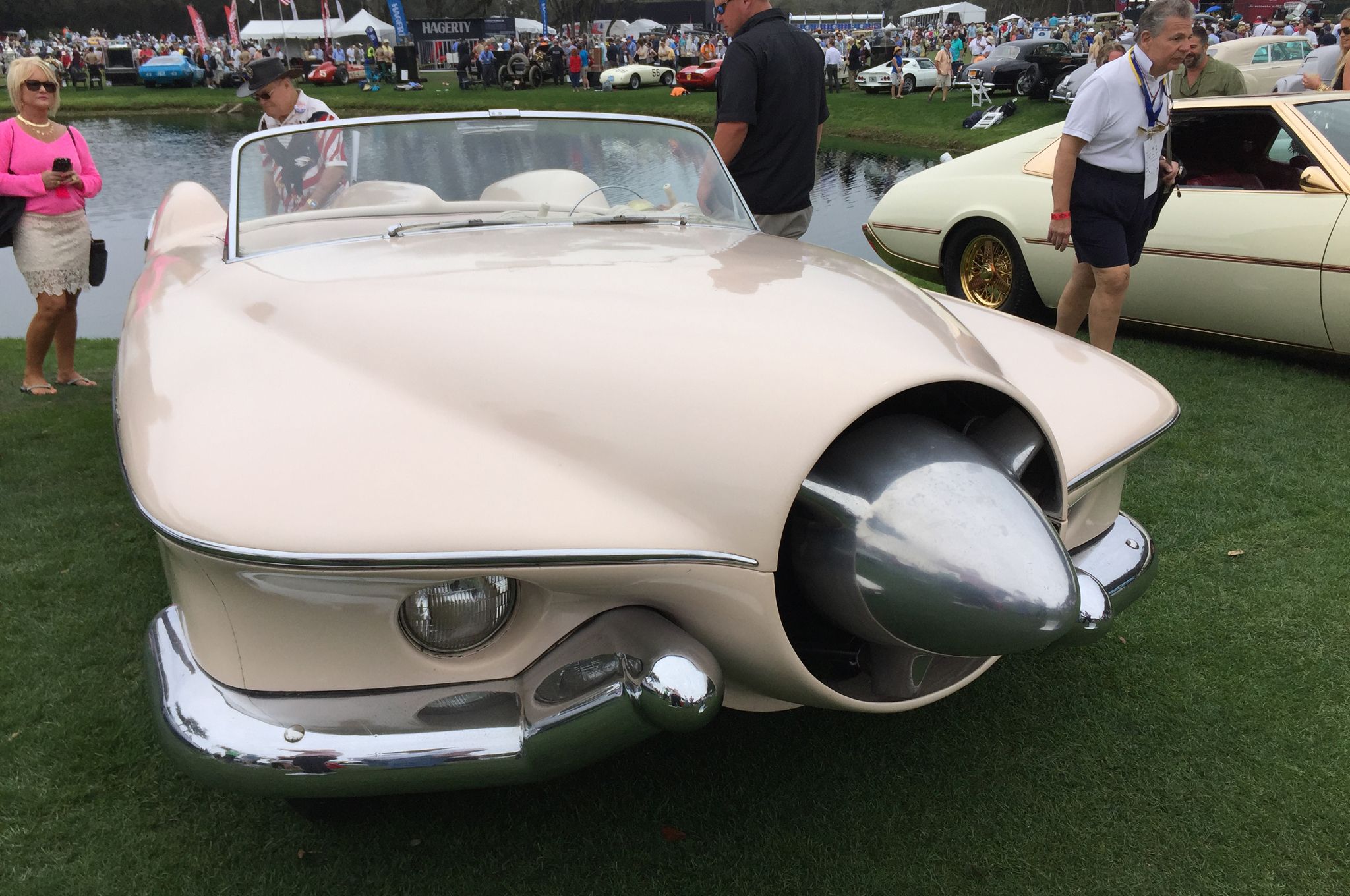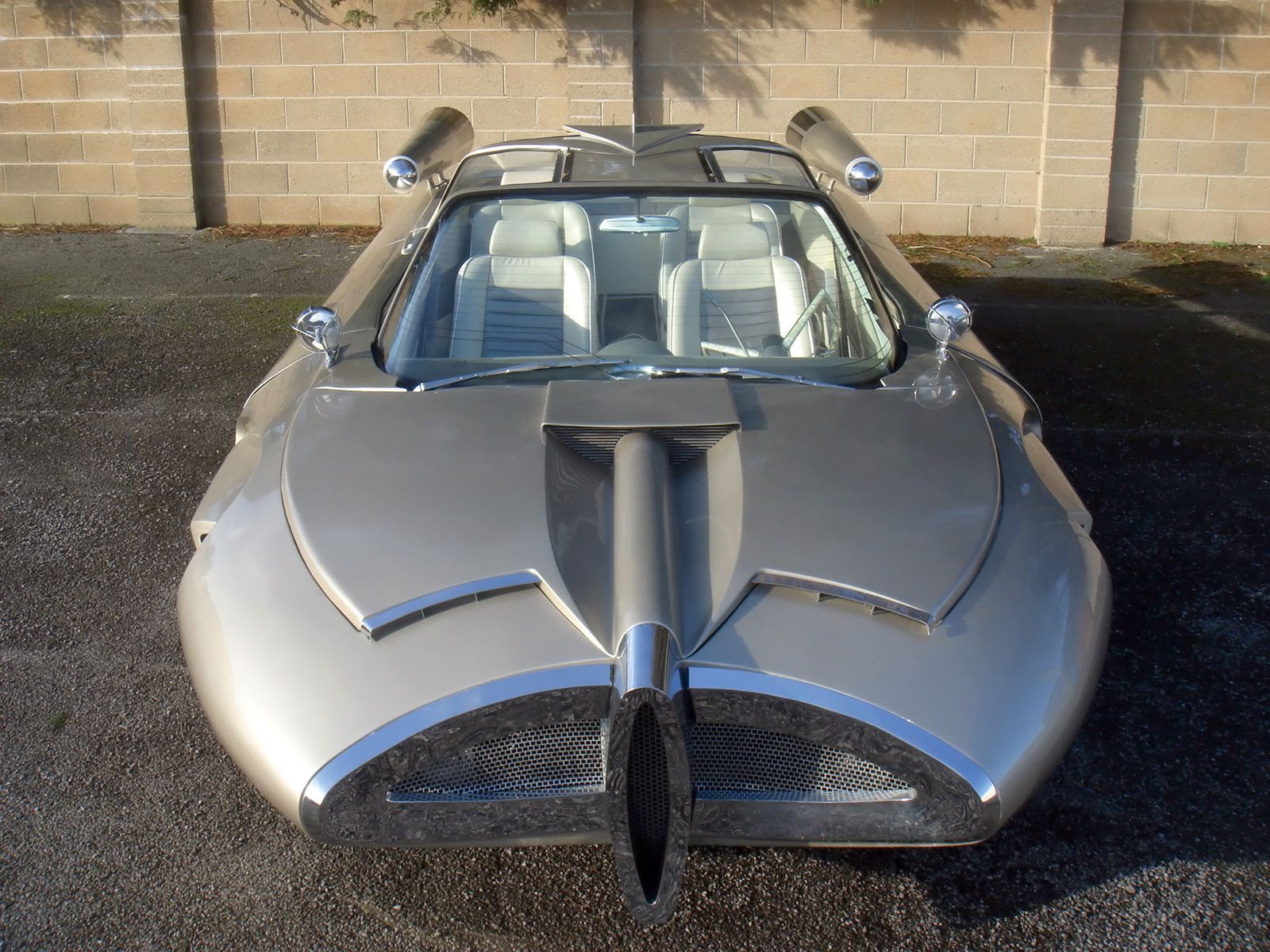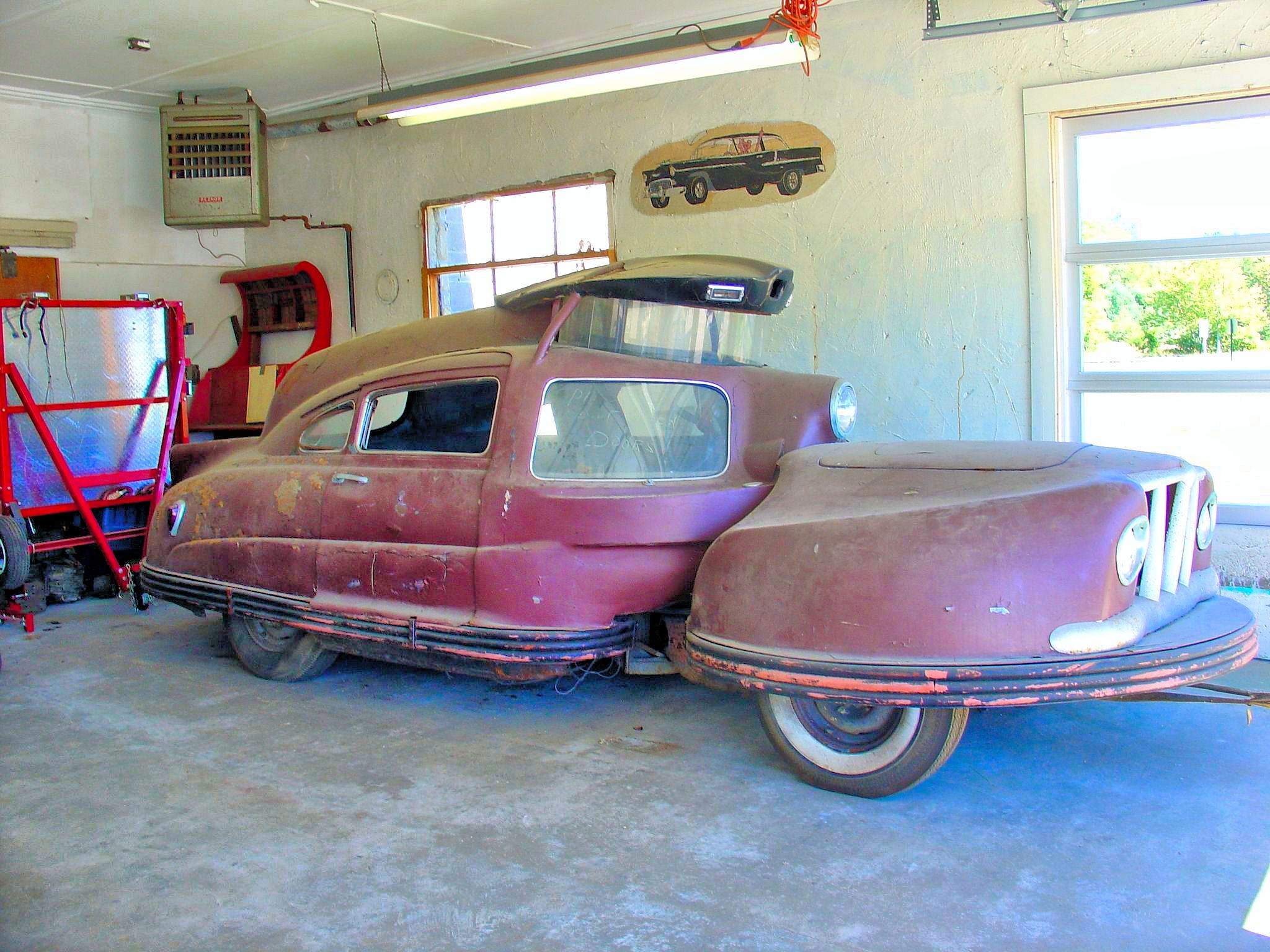The progress of the automobile is nothing short of amazing. Just think of how crude the Model T is. You crank it up to start it, don’t have an enclosed cabin and it probably consumed more oil than fuel (not really, but my expectations of early 20th century engine performance are understandably biased). As archaic as it was, it was light years ahead of a horse and carriage. In fact, this was the era of mankind’s release from his reliance on the horse; the automobile was one of the final puzzle pieces left – steam power already had a healthy grab on surface transportation and the average consumer was about to get a lifestyle upgrade as well.
Henry Ford’s early production cars were not to be cutting edge for long, and sometime in the ‘50s, ‘cutting edge’ automotive design became a raging trend. When I say cutting edge, understand I’m not talking about the next iPhone here. We’re talking about technology that no general consumer has any business ever owning – such as a jet-powered car, or a nuclear one. Sounds stupid right? Indeed it is, but back in the day, we didn’t have any idea what the future holds (much like today) and wild stabs into an ambiguous horizon meant that there was nothing out of bounds; three-wheeled cars; tandem-action cars with a central pivot point; cars with rear steering and ones that were so heavy, they needed dual-tires on both the front and rear axles. There were no limits to the lunacy, but a lot of them actually incorporated very innovative designs that have become standard-issue automobile equipment.
19 1961 Ford Gyron
Looking like it would be more comfortable climbing through a cloud layer at 1,000’ above ground level, the Gyron’s body is chiseled with the aerodynamic considerations of an airplane. Whether it provided any inspiration to the TV series The Jetsons open to debate. Its 1960 debut and the Jetsons’ subsequent airing in 1962 does seem pretty coincidental, however. The Gyron is only equipped with two wheels; it draws its stabilization from the internal gyroscopes (hence the name). It was created for research and marketing purposes by the Ford Motor Co. If you can believe it, was designed by a guy named Alex Tremulis. “Who’s that guy?” you ask? Nobody you’d care about today. But before working on this project at Ford, he was working on flying saucer concepts for the Air Force at Wright-Patterson AFB. (Surprised, aren’t you?)
18 1953 General Motors Firebird I
The war had just ended and an army of young men was coming back stateside with a military technical training that was state of the art. Hot rodding during this time saw exponential performance gains as we started to really put some fire behind our late-night tinkering sessions with our cars.
Some of this enthusiasm for speed was adopted by automakers like GM who briefly dabbled in turbine power.
Rather than vectoring jet thrust into unsuspecting traffic behind, GM was considerate enough to drive an output shaft into a transmission that powered the wheels instead. The Thrust 1 generated up to 370hp at a turbine speed of 13,000rpm. Not too shabby for the ‘50s, eh?
17 1956 General Motors Firebird II
“If your first jet-powered concept car doesn’t take off, build another one,” said one man. Within three years of the original Firebird’s debut, the Firebird II was released by GM as a follow-up model.
Slightly more practical, it featured provisions for four occupants – three more than the Firebird I.
Still, it’s highly likely that the lack of practicality had less to do with passenger seating arrangements and more to do with the fact that a gas-turbine was what powered it. I can’t imagine this thing firing up in the driveway next to me every day at 6:00 am, and apparently, neither could anyone else.
16 1958 General Motors Firebird III
Truth be told, as funny as it is to pretend the Firebirds were super-flops that singed holes through a surplus budget for no reason, the Firebird series actually was conceived for a reason. The third and final Firebird installment was to be the most intriguing of the three – all of which were constructed for the rolling Motorama presentation. Basically, this was a traveling auto show that GM put on to boost sales. They traveled the country showing off super hi-tech cars (and lots of other cool things) and inspired a generation. That was the official mission statement anyway. In reality, it was just a show of chest pounding by an automaker.
15 1956 Oldsmobile Golden Rocket
GM had an infatuation with the aircraft in the ‘50s and ’60s. It was possible that ex-military talent drove this design styling forward following the war. It’s also possible that GM, having produced aircraft parts for the war effort, was already in a “kick the tires and light the fires” kind of mood anyway. Either way, the Rocket is a ’56 gem that was created exclusively for the Motorama show and was considered far out by even Firebird standards. The hi-tech, aircraft-inspired styling doesn’t stop at the exterior. From articulated doors to rudder-style pedals, the Golden Rocket looked wilder on the inside than it did on the outside. But as futuristic as the Golden Rocket was, a standard Chevy coupe can almost be seen in the roof and pillar design if you squint your eyes.
14 1958 Ford Nucleon
Ford and Chevrolet were very focused on concepts – whether practical or not. It was more of a publicity stunt and a show of industrial prowess; I can’t see anybody ever going for a three-wheeled Ranchero that hovers the driver way out in front of the axles, but it was a thing.
Huge, pointless fins extruded from the tail just as obnoxiously tall as the nose was long.
A single rear wheel ruddered the nose where you wanted it to go; but the most interesting part is the propulsion method. Although Ford did not provide a means of power generation, they left that canvas blank with the intent for nuclear-fusion energy.
13 1955 Lincoln Futura
General Motors wasn’t the only one plugging bubble-style canopies into their chassis and calling them ‘cars of the future.’ Lead stylists John Najjar and Bill Schmidt are responsible for the aesthetics of the expensive Futura while the construction was left to Ghia in Turin, Italy. In today’s dollars, the design and production costs would exceed $2 million. (So, like a drop in the bucket for Ford.) The Futura would eventually be butchered into the OG Batmobile that most folks are too young to appreciate. Contrary to many of the wild concepts of the day, the Futura was a fully-operational car complete with an engine and drivetrain.
12 1957 Aurora Safety Car
We didn’t really care about safety in 1957 – and thank God! Line this thing up next to a ’57 Bel Air – and suddenly, the concept of danger starts to look pretty good. While the Chevy 150s were blazing a new trail with an embryotic stock-car racing league, this safety car was commissioned by a Catholic priest before safety cars were even a thing. The $30,000 prototype (in 1957 dollars) was partially funded by the congregation but the Aurora Motor Company of Branford, Connecticut went out of business before ever having produced any more than one prototype. (It could be raining brimstone from the sky, I’d still rather have a Chevy.)
11 1970 Ferrari Modulo
Here’s a beauty from Ferrari that actually started out as a Group 5 race car (the 512S) before being converted to a Can-Am spec racecar. The 512S engine and chassis were not to remain together and the car was stripped of its racing gear before the chassis was given to Pininfarina, Ferrari’s former go-to design company, to build into a show car.
It debuted at the 1970 Geneva Motor Show looking like something out of a B sci-fi ‘70s movie, but was actually well-received in its day.
Today, it’s getting a second chance at life as James Glickenhaus has taken it upon himself to bring the prototype to an operational status for the first time since the chassis was a race car.
10 1933 Dymaxion Fuller
Sometimes innovation is so cutting edge, we don’t necessarily understand how sharp that edge is until we get cut on it. The boundaries of the preverbal envelope are not to be tampered with by the faint of heart; many brave men have lost their lives trying to push innovation forward. Crude airplanes were a perfect example of this, but aviation wasn’t the only frontier being blindly charged by pioneers. In a front-engine, rear-wheel drive landscape, the Dymaxion aimed to be different and implemented one of the first front-wheel drive configurations along with a bunch of other nifty doo-dads. Many of these innovative, little doo-dads were used in later automotive designs but the Dymaxion was just too dangerous.
9 1959 Chevy XP-700
It wasn’t only the prototypes having all of the fun, Bill Mitchell made sure of it. He was Vice President of General Motors Styling in ’58, and personally worked with the design studio on this concept car. It featured a super-cool tech-like a bubble canopy for a 360°-view and a periscopic rear-view mirror that gave you an unobstructed view of your six. Although some concepts highly modify a car or chassis beyond all clear recognition, the XP-700 maintained many of the signature Corvette design cues while being distinctive enough to seldom be mistaken for it if you really knew your cars.
8 1953 Alfa Romeo Bat 5
Ford and General Motors did get a lot of the action as far as far-out prototypes that never had any realistic chance of success. They were mostly a measuring stick anyway, but it was still cool to see what designers could do when uninhibited by a goal of unit sales. Left to their own devices, Alfa Romeo got in a few pieces of action starting with a series of Bat cars. First in line, the Bat 5, aimed to solve the issue of aerodynamic disturbances as oncoming air interacted with the front of the car. I’m no expert here, but opting for two enormous pockets carved into the front weren’t what they were doing in Bonneville – just saying.
7 1954 Alfa Romeo Bat 7
Just one year after Bat 5 debuted, they Alfa Romero built a follow-up, and it was even sleeker than the Bat 5. Making an entrance at the Turin Motor Show, its styling was saturated with an aeronautical influence as its designer implemented elements of his wing profile design experience into the weird curves. Its nose sat lower than that of its predecessor Bat and it even featured headlights that retracted when not in use. It’s interesting to see all the great ideas that died out, only to resurface decades later. The proliferation of adaptive head lighting is just starting to take place, but the idea can be traced back to the 1900s has.
6 1959 Pontiac Club De Mer
The Motorama shows of the ’50s did feature contemporary designs of the day, and although it did sell cars, the show’s main stars were the dream cars of the future. (You know, those ones that don’t ever actually happen?) Harley Earl is responsible for much of this radical styling; perhaps one of his most noteworthy examples is almost the epitome of Motorama – the Club De Mer.
It was originally a non-running chassis that was intentionally destroyed in 1958, but that wasn’t to end its legacy.
A recreation was built with a ’59 Pontiac platform powered by a Strato Streak 389 (which just sounds cool) and its Jetaway Hydromatic. It’s probably out of your price range, however, as this clone sold for over $100,000 at a Barrett-Jackson auction.
5 1956 Chrysler Diablo
You know if you sit and think about it long and hard enough, you just might come to the conclusion that there really is something to this futuristic-prototype nonsense that people were really big on in the ‘50s. That’s when some of the most substantial prototypes were ever created, yet still naïve enough to aspire to be powered by nuclear energy. Although nobody wants a 60-year old, reactor-powered hot rod, to those with traditional powertrains, they can land you a fat payday if you can slide one successfully through a Barrett-Jackson auction. A Diablo did to the tune of $1.3 million dollars. (Worth it? Probably not.)
4 1939 General Motors Futurliner
Perhaps the epitome of modern-day nostalgia, the Futurliner was nothing short of hi-tech in 1939. The very foundation from which the Futurliner was built was an idea of embracing the future. The words ‘Parade of Progress’ are painted on the sides of the truck against a proud, red backdrop that wraps around its massive body.
12 in total were built, and they were designed to showcase the future of technology.
They’d lumber around at 11 tons each, with tiny four-cylinder diesels and four-speed transmissions until a later conversion to a 302cid V-6 was introduced. Of the 12 original units, nine are said to remain in various states of restoration and are ridiculously expensive today.
3 1951 Manta Ray
This is the result of two builders, both from aviation backgrounds, who got inspired by the 1951 GM Le Sabre concept and decided to build the car of their dreams. Lacking wings, they opted for a frontal approach to their aviation muse and crafted a grille into the front end worthy of any contemporary flight line. You’d almost expect to hear turbines spooling up when you turned the key. The hand-made body is sectioned into 14 pieces and building the car was not an easy task. It started out as a Studebaker Commander. What happened to it after that was something only the ‘50s could get away with.
2 1958 Ford X2000
As crazy as designers were going in the ‘50s, nobody seemed to have a clue what they were doing. This was very apparent by the vast diversity in the styling themes. Aviation was mixed with motorcycles that were mixed with Night Rider that was mixed with hover crafts; when you stopped and looked at everything sitting next to each other, it was impossible to see a clear direction – car design was just all over the place. This one came back to life after 3,500 hours of labor between 1994 and 1996 and is constructed mostly of steel, finished off with sable gold pearlescent paint.
1 1958 Sir Vival Safety Car
Leave it to one guy to rain on the parade of progress. By progress, I mean lack of consideration for safety to a staggering degree – because anything else just isn’t fun. Wanna know how I can tell? Compare this jalopy to a turbofan-powered chassis and it’s clear to see who’s taking the prom queen to the dance.
The appropriately named Sir Vival was developed in reprehension to a perceived gross negligence of automakers to implement safety devices into their production automobiles.
Just who this Walter C. Jerome thinks he is is still a mystery this day, but thinking that an articulated car is safer than a rigid chassis for the average motorist is about as great an idea as thinking that we should just let everybody fly around willy-nilly in their hover cars too.
Sources: jalopnik.com, bloomberg.com, gmheritagecenter.com, motor1.com, artstation.com, hemmings.com, chevyhardcore.com, barrett-jackson.com.

